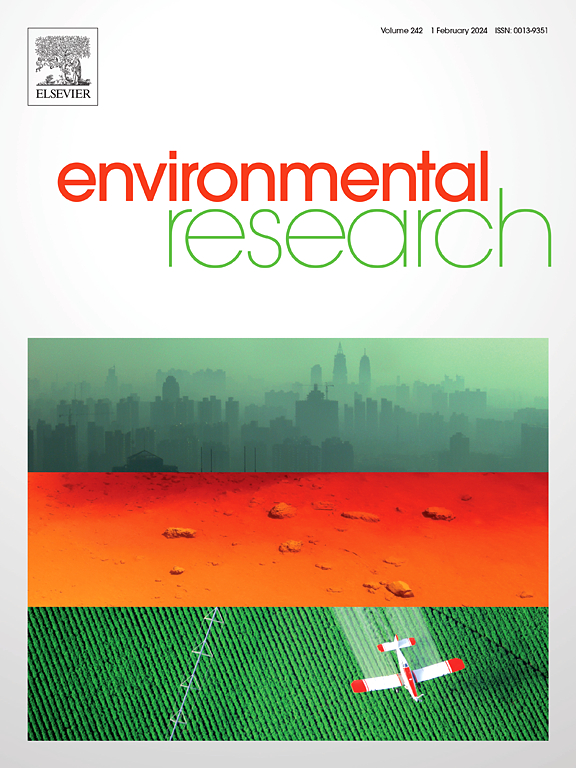Lattice-matching formed covalent heterointerfaces based on epitaxial growth of ZnIn2S4 nanosheet on Cu2S nanobox to accelerate charge separation for effective antibiotic degradation cooperated with hexavalent chromium reduction
IF 7.7
2区 环境科学与生态学
Q1 ENVIRONMENTAL SCIENCES
引用次数: 0
Abstract
Nowadays, water pollution issues caused by antibiotics and heavy metals have become a focus of global concern, and it is greatly significant to develop effective methods to remove heavy metal and organic contaminant from wastewater. Herein, newly-designed Cu2S/ZnIn2S4 p-n heterojunction with internal electric field is constructed by using epitaxial growth strategy. Importantly, lattice well-matched heterointerface between Cu2S and ZnIn2S4 presents very low charge transfer resistance. Under the mediation of internal electric field, the generation and separation of photogenerated carriers are effectively improved, and the formation of hollow structure enhances visible light absorption capability. Benefiting from these changes, photogenerated electrons and holes can be directly involved in tetracycline (TC) degradation and Cr(VI) reduction, avoiding intermediate reaction processes. Under visible light illumination, thus, Cu2S/ZnIn2S4 composite shows superb performance in the treatment of wastewater containing both antibiotic and Cr(VI). The removal efficiencies of TC and Cr(VI) are as high as 96.7 % and 94.1 % within 32 min, respectively. Interestingly, Cr(VI) reduction over Cu2S/ZnIn2S4 is a stepwise process, and Cr(VI) is first reduced to Cr(V) and then transformed into Cr(III). Notably, Cr(V) with strong oxidation ability as transition intermediate can further promote antibiotic degradation.

基于ZnIn2S4纳米片在Cu2S纳米盒上外延生长的晶格匹配形成共价异质界面,加速电荷分离,有效降解抗生素并配合六价铬还原
目前,抗生素和重金属引起的水污染问题已成为全球关注的焦点,开发有效的方法去除废水中的重金属和有机污染物具有重要意义。采用外延生长策略,构建了具有内电场的新型Cu2S/ZnIn2S4 p-n异质结。重要的是,Cu2S和ZnIn2S4之间的晶格匹配良好的异质界面具有非常低的电荷转移电阻。在内部电场的作用下,光生载流子的生成和分离得到有效改善,中空结构的形成增强了可见光吸收能力。得益于这些变化,光生电子和空穴可以直接参与四环素(TC)降解和Cr(VI)还原,从而避免中间反应过程。因此,在可见光照射下,Cu2S/ZnIn2S4复合材料在处理含抗生素和Cr(VI)的废水中表现出优异的性能。在32 min内,对TC和Cr(VI)的去除率分别高达96.7%和94.1%。有趣的是,Cr(VI)在Cu2S/ZnIn2S4上的还原是一个循序渐进的过程,Cr(VI)先被还原为Cr(V),然后转化为Cr(III)。值得注意的是,具有较强氧化能力的Cr(V)作为过渡中间体可以进一步促进抗生素的降解。
本文章由计算机程序翻译,如有差异,请以英文原文为准。
求助全文
约1分钟内获得全文
求助全文
来源期刊

Environmental Research
环境科学-公共卫生、环境卫生与职业卫生
CiteScore
12.60
自引率
8.40%
发文量
2480
审稿时长
4.7 months
期刊介绍:
The Environmental Research journal presents a broad range of interdisciplinary research, focused on addressing worldwide environmental concerns and featuring innovative findings. Our publication strives to explore relevant anthropogenic issues across various environmental sectors, showcasing practical applications in real-life settings.
 求助内容:
求助内容: 应助结果提醒方式:
应助结果提醒方式:


